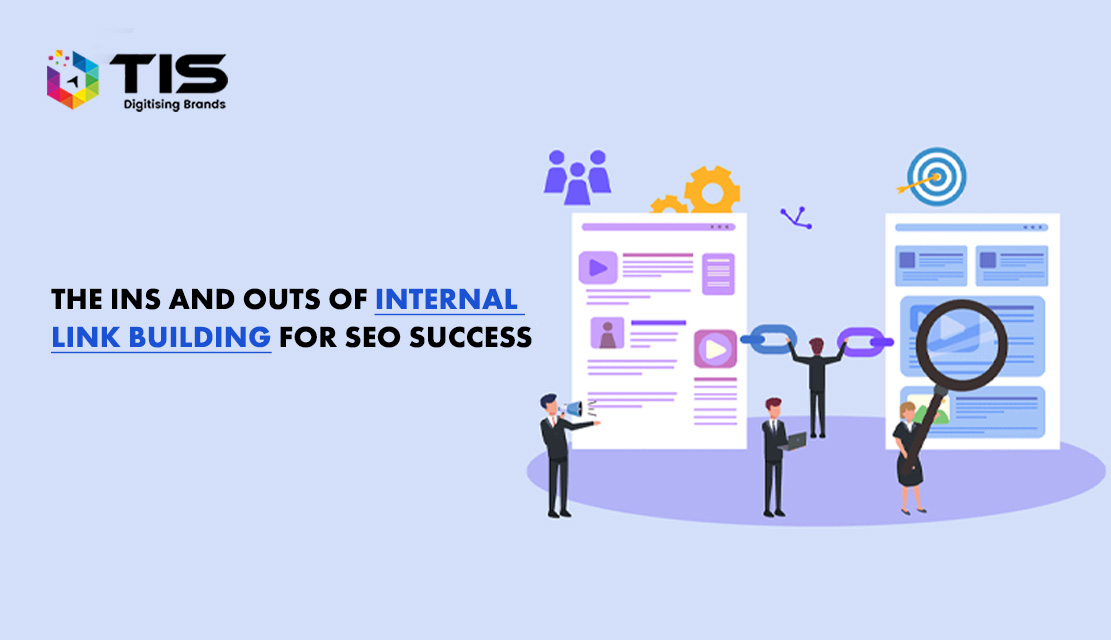






It refers to an article or piece of content that aims to define and explain the concept of internal linking in the context of search engine optimization (SEO). Internal linking refers to the practice of linking pages within a website to other pages within the same site. These links are important for SEO as they help search engines to better understand the content and structure of a website, and can also help to distribute link equity and authority throughout the site. In this article, readers can expect to learn the basics of internal linking, the benefits of internal linking for SEO, and how to implement effective internal linking strategies on their own website.
Internal linking and external linking are two different strategies used in website design and optimization. The main differences between the two are as follows:
Definition: Internal linking refers to the practice of linking one page on a website to another page on the same website, while external linking refers to the practice of linking one page on a website to a page on a different website.
Purpose: The purpose of internal linking is to help users navigate a website and to establish a hierarchy of information on the website. The purpose of external linking is to provide additional information to users, to build relationships with other websites, and to establish credibility.
SEO Impact: Internal linking is an important part of on-page SEO, as it helps search engine crawlers understand the structure and hierarchy of a website. External linking is also important for SEO, as it can help establish the authority and relevance of a website.
Control: Internal linking is under the control of the website owner, as they can decide which pages to link to and how to structure the links. External linking is less under the control of the website owner, as they cannot control which websites link to their pages.
Trustworthiness: Internal linking is generally considered more trustworthy by users and search engines, as it indicates that the website owner has control over the information presented on the website. External linking can be less trustworthy, as the website owner cannot control the information presented on external websites.
Internal linking serves several important purposes for your website, including:
Creating new relevant content and pages on your site that aren’t being linked to yet by external sources.
Improving user experience by making it easy for visitors to navigate between different sections of your site.
Boosting search engine traffic by directing search engines to high-quality content on your site.
Google’s PageRank algorithm is an essential factor in determining a webpage’s importance and relevance. It calculates the score based on the number and quality of external links that point to a page. However, internal linking also plays a crucial role in determining a page’s PageRank score.
Internal linking helps search engines understand the structure of your website and which pages are essential and relevant to your users. It also passes PageRank from one page to another, which helps to boost the PageRank score of important pages on your website.
To optimize internal linking for improving PageRank, it is vital to use descriptive and relevant anchor text in the links. This helps search engines understand the content of the linked page and its relevance to the page being linked from. Internal linking, combined with relevant anchor text, can help improve your website’s PageRank and search engine visibility.
Internal linking is an essential aspect of search engine optimization (SEO) that involves linking one page of a website to another page within the same site. Internal linking helps to establish the site’s hierarchy and structure, making it easier for both search engines and users to navigate the website.
From an SEO perspective, internal linking is important because it helps search engines understand the content and structure of a website. By linking from one page to another, you are effectively signaling to search engines that the linked-to page is important and relevant to the content on the linking page.
Internal linking can also help to distribute link equity, or PageRank, throughout a website. When you link from one page to another, you are passing some of the link equity from the linking page to the linked-to page. This helps to boost the linked-to page’s authority and visibility in search engine results pages (SERPs).
In addition, internal linking can also improve user experience by making it easier for visitors to find the information they need on a website. By linking to relevant content within your site, you can keep visitors engaged and encourage them to spend more time on your site, which can ultimately lead to higher rankings and more traffic.
Overall, internal linking is a crucial part of any SEO strategy, and website owners should take the time to carefully plan and execute their internal linking strategy to maximize the benefits for both search engines and users.
Use descriptive and relevant anchor text: When you create an internal link, use descriptive and relevant anchor text that gives an idea about the content of the linked page. This helps search engines to understand the content of the linked page and its relevance to the page being linked from.
Link relevant pages: Always link pages that are relevant to each other. For example, if you have a blog post about a certain topic, you can link it to a relevant product page or a service page on your website.
Avoid using too many internal links: While internal links are important, it’s important not to overdo it. Use only as many internal links as necessary to make your content informative and user-friendly.
Keep your website structure in mind: Your website structure plays an important role in internal linking. Make sure to link pages that are closer in the hierarchy and avoid linking pages that are too far apart in the structure.
Use a mix of different types of internal links: Use a mix of navigational links, contextual links, and footer links to make your internal linking more effective.
Monitor your internal links: Regularly monitor your internal links to make sure they are working properly and update them as necessary. Broken links can negatively impact your website’s SEO.
Prioritize your most important pages: Make sure to prioritize your most important pages by linking to them from other pages on your website. This helps to boost their visibility and improves their chances of ranking higher in search results.
When building internal links on your website, there are some common mistakes that you should avoid in order to ensure that your internal linking strategy is effective and doesn’t negatively impact your website’s SEO. Here are some mistakes to avoid:
Using generic or vague anchor text: Anchor text is the clickable text in a hyperlink, and it’s important to use descriptive and relevant anchor text when linking to other pages on your website. Avoid using generic phrases like “click here” or “read more,” and instead use specific keywords that accurately describe the content of the linked page.
Overusing exact match anchor text: While it’s important to use relevant anchor text, using the same exact match keyword repeatedly in your internal links can be seen as manipulative by search engines and can result in a penalty. Instead, vary your anchor text and use related keywords and phrases.
Linking to low-quality or irrelevant pages: When building internal links, it’s important to link to high-quality pages that are relevant to the content of the linked page. Avoid linking to pages with little or no value or pages that are irrelevant to the content of the linked page.
Using too many internal links on a single page: While internal linking is important, overusing internal links on a single page can make the page appear spammy and can confuse both search engines and users. Limit the number of internal links on a single page and only link to pages that are truly relevant.
Ignoring the structure of your website: The structure of your website plays an important role in the effectiveness of your internal linking strategy. Make sure that your website is organized in a logical and hierarchical manner, with important pages linked from your homepage and other high-level pages.
In conclusion, internal linking is an essential aspect of SEO services, which helps search engines and users to navigate a website by creating links between pages within the site. There are different types of internal links, including navigation, contextual, footer, breadcrumb, image, and anchor text links. Internal linking is different from external linking, which links to pages on a different website. Internal linking serves several purposes, including creating new relevant content, improving user experience, and boosting search engine traffic. Moreover, internal linking is crucial for improving a page’s PageRank score, as it helps search engines understand the structure of a website and passes PageRank from one page to another. Internal linking can also help to distribute link equity throughout a website, boost a page’s authority and visibility in SERPs, and improve user experience. Best practices for internal linking include using descriptive and relevant anchor text, linking to relevant content, and limiting the number of links on a page.

Introduction: The topic highlights the crucial role of user experience (UX) in search engine optimization (SEO) and emphasizes the significance of enhancing website design and navigation to attain improved rankings in search engine results. It delves into the correlation between user experience and SEO, recognizing the interdependency between the...
Read More

Introduction: Google algorithm updates play a critical role in determining the ranking of search results by modifying the intricate rules and calculations involved. Their primary objective is to enhance the quality and relevance of search results, ensuring that users find the most valuable and accurate information. However, these updates...
Read More

Introduction The role of content marketing in SEO is essential for businesses aiming to achieve better rankings and enhance their online visibility. Content marketing revolves around the creation of valuable, informative, and engaging content that resonates with the target audience. In the realm of SEO, high-quality content holds significant...
Read More